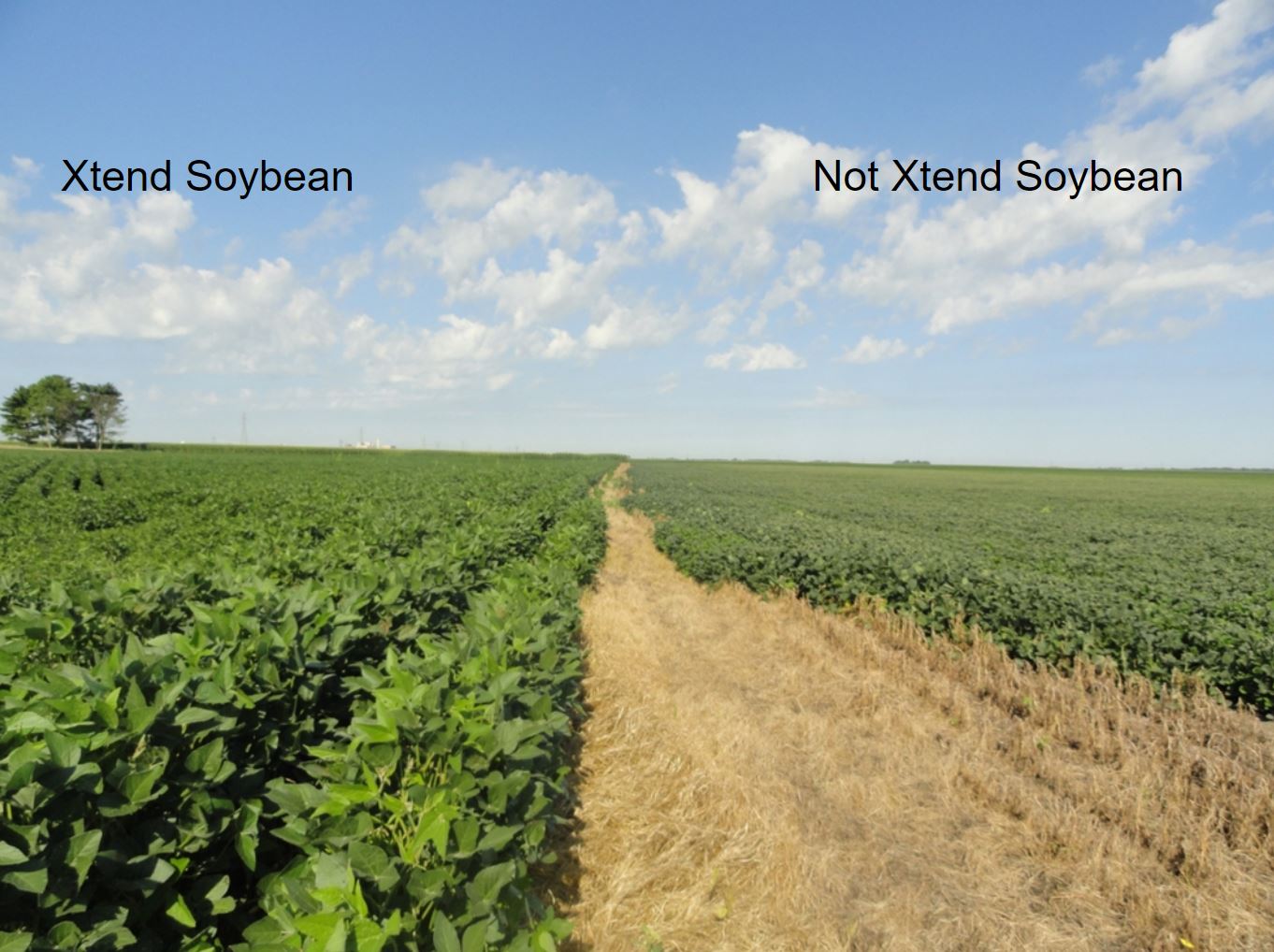St. Paul, MN (May 2019)—Dicamba is a highly effective herbicide that can suppress even the most herbicide-resistant weeds—but it can also injure soybean. Because of this, more and more farmers are adopting dicamba-resistant soybean varieties (Xtend) so that they can safely use dicamba on their fields.
Non-Xtend soybean still suffers damage from dicamba, which can be transferred by drift and/or volatility, as well as spray tank contamination. Signs of injury include cupping of leaves and white or yellow discoloration of leaves.
 In the fully open access webcast “Diagnosing Soybean Injury Caused by Dicamba,” Bill Johnson, Purdue University professor of weed science, explains how dicamba exposure affects non-Xtend soybean growth, development, and yield. Through his research, Johnson found that the rates required to cause injury symptoms were much lower than the rates that caused yield loss. Dicamba exposure impacts soybean-yield parameters, such as number of fruiting nodes, seed size, seeds per pod, and pods per area. Measurable yield losses of 10% or more were observed in some instances of dicamba exposure.
In the fully open access webcast “Diagnosing Soybean Injury Caused by Dicamba,” Bill Johnson, Purdue University professor of weed science, explains how dicamba exposure affects non-Xtend soybean growth, development, and yield. Through his research, Johnson found that the rates required to cause injury symptoms were much lower than the rates that caused yield loss. Dicamba exposure impacts soybean-yield parameters, such as number of fruiting nodes, seed size, seeds per pod, and pods per area. Measurable yield losses of 10% or more were observed in some instances of dicamba exposure.
Learn more about how dicamba can affect non-Xtend soybean varieties in this new webcast, which is intended for growers and professionals in the crop protection industry.
cooperative, not-for-profit resource for the applied agricultural and horticultural sciences. Together with more than 80 partners, which include land-grant universities, scientific societies, and agribusinesses, PMN publishes quality, applied, and science-based information for practitioners.
